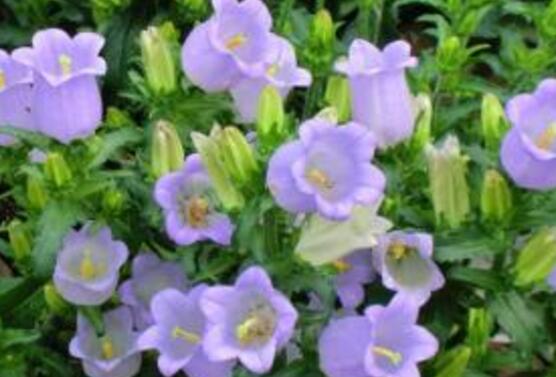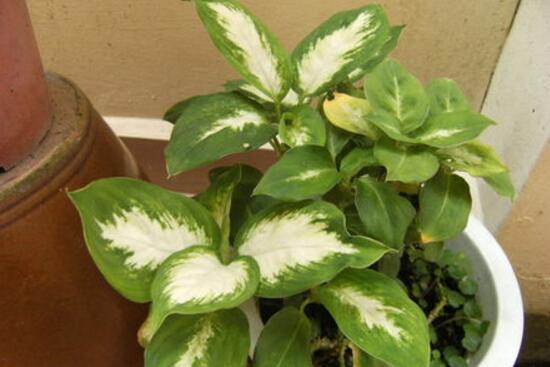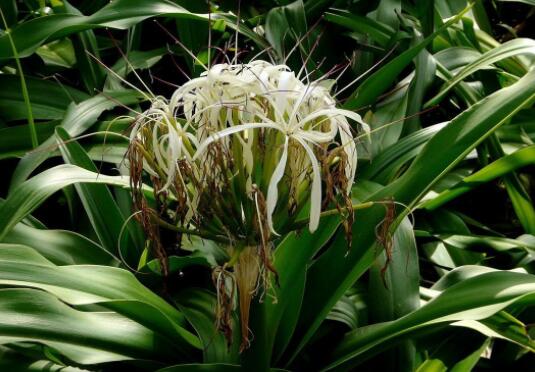How to breed bluebells, how to breed bluebells/5 steps to complete sowing/pay attention to heat preservation
There are more than 200 species of bluebells, most of which are perennial herbaceous plants, whose roots are slender and horizontal, so the suitable way to reproduce is also the same as other plants, so how does Campanula reproduce? Let's learn about the breeding methods of bluebells with the editor.
How does Campanula reproduce

Generally speaking, Campanula will use sowing and propagation, in addition, it can also use cutting, ramet and so on, but the most commonly used is sowing, which is simple to maintain and more conducive to the growth and flowering of bluebells. Below, we will introduce in detail the sowing methods of bluebells.
Propagation methods of bluebells
First, sowing time
The timing of sowing is determined according to local climate and time spent. For example, in Guangdong, if you want to spend the Spring Festival, you need to sow seeds from July to August, because it usually takes six months from sowing to flowering. When potted plants are cultivated, the sowing time is generally chosen in spring.
2. Sowing method
1. Select seeds
The seeds of bluebells are relatively small, but try to choose fuller seeds, which can improve the germination rate after sowing and make reproduction more successful.
2. Prepare the matrix
The substrate should be a relatively fertile and loose sandy soil, and it is best to disinfect the soil. There are two general methods: one is to put the soil in the sun for 1-2 days; the second is to irrigate with carbendazim, which can protect the bluebell grass from diseases and insect pests.
3. Sowing seeds
Sow the seeds evenly on the soil, and then cover the soil, but it should be noted that the soil is not too thick, and then need to be watered through, but do not let the soil stagnant water, just keep the soil slightly moist.
4. Maintenance and management
Ensure that the temperature is about 20 degrees, so that bluebells can germinate smoothly. Need to ensure that it can enjoy sufficient light during seedling emergence but avoid direct sunlight, and pay attention to the moist soil, which can sprout after 2-3 weeks.
5. Raising seedlings or transplanting
Seedlings do not need too much fertilization and watering, can be raised by ramet or cuttage, and then planted, must be irrigated enough water for fixed roots, and then can be transplanted after the leaves grow out. After transplanting, normal management is carried out in accordance with the breeding methods of bluebells.
Main points of propagation of bluebells
The color of bluebells is fresh and elegant, which is very popular in Europe. It is also a common herbal flower in small courtyards in late spring and early summer. It is very beautiful. The cultivation of bluebells is not difficult, and artificial propagation can be done by sowing, cutting and ramet.
Canterbury bell
Campanula is mainly sown and cultured, and it can also be planted or cut to raise seedlings. Form a capsule after flowering, and there are many seeds in the fruit. The seeds are very small and can be dried and stored in the sun. In spring or in late winter and early spring, the seeds are sown in a plastic shed to facilitate staggered high temperature and summer heat during flowering. According to the requirements of small seeds, soil preparation should be meticulous, crushing the soil more than 2 times, scraping the ground, drenching enough water, and then sowing our seeds evenly.
After sowing, it is no longer covered with soil or thinly covered with sifted fine soil. Spray water with sprayer in the seedling stage, and replenish the seedlings according to the growth of the seedlings. The seeds can also be sown in a sand table, and compound fertilizer can be applied immediately after seedling emergence. When the seedling height is about 10 cm, it is transplanted to the nursery or planted in the upper basin. The row spacing of the plants planted in the nursery should be 20 cm x 40 cm, and the root water should be fixed after transplantation, and then be managed according to general management. It can also be sown in autumn. Generally, the seedlings sown in autumn need to be cultivated to the spring and summer of the following year before they can blossom. Ramets are carried out more than in autumn and can blossom in the following year after being cultivated for one winter.
The cuttings are more than the new buds germinated at the base in spring, inserted into the wet sand bed, often sprayed to moisturize, and then transplanted after growing roots.
The propagation technology of tufted bluebell grass is mainly sown and propagated, and it can also be planted or cut to raise seedlings. After flowering, it forms a capsule, and the first fruit has many seeds. The seeds are very small and can be dried and stored in the sun. In spring or in late winter and early spring, the seeds are sown in a plastic shed to facilitate staggered high temperature and summer heat during flowering.
According to the requirements of small seeds, soil preparation should be meticulous, crushing the soil deeply for more than 2 times, scraping the ground, drenching enough water, and then sprinkling our seeds evenly.
After sowing, it is no longer covered with soil or thinly covered with sifted fine soil. Spray water with sprayer in the seedling stage, and replenish the seedlings according to the growth of the seedlings. The seeds can also be sown in a sand table, and compound fertilizer can be applied immediately after seedling emergence.
When the height of the seedling is about 10 cm, it is transplanted to the nursery or planted in the upper basin. The row spacing of the plants planted in the nursery should be 20 cm x 40 cm, and the root water should be fixed after transplantation, and then be managed according to general management.
It can also be sown in autumn. Generally, the seedlings sown in autumn need to be cultivated to the spring and summer of the following year before they can blossom. Ramets are carried out more than in autumn and can blossom in the following year after being cultivated for one winter.
The cuttings are more than the new buds germinated at the base in spring, inserted into the wet sand bed, often sprayed to moisturize, and transplanted after rooting.
- Prev

How to propagate evergreen, the propagation method / tissue culture of evergreen can be alive.
Flowers and leaves evergreen leaves are broad and beautiful, easy to feed, often used to decorate the living room, study and other places, is the most popular indoor pot. In life, many people raise a pot of evergreen at home. Some of them buy existing potted plants directly, while others breed on their own. How do they breed them?
- Next

How to propagate Wenshu orchid? the propagation method / sowing propagation / ramet propagation of Wenshu orchid
Wenshu orchid is a common ornamental flower in people's life, and it is cultivated in many areas of our country. With more people breeding, people are more concerned about its reproduction, so how does Manjusri breed? What are the breeding methods of Wenshu orchid?
Related
- Fuxing push coffee new agricultural production and marketing class: lack of small-scale processing plants
- Jujube rice field leisure farm deep ploughing Yilan for five years to create a space for organic food and play
- Nongyu Farm-A trial of organic papaya for brave women with advanced technology
- Four points for attention in the prevention and control of diseases and insect pests of edible fungi
- How to add nutrient solution to Edible Fungi
- Is there any good way to control edible fungus mites?
- Open Inoculation Technology of Edible Fungi
- Is there any clever way to use fertilizer for edible fungus in winter?
- What agents are used to kill the pathogens of edible fungi in the mushroom shed?
- Rapid drying of Edible Fungi

